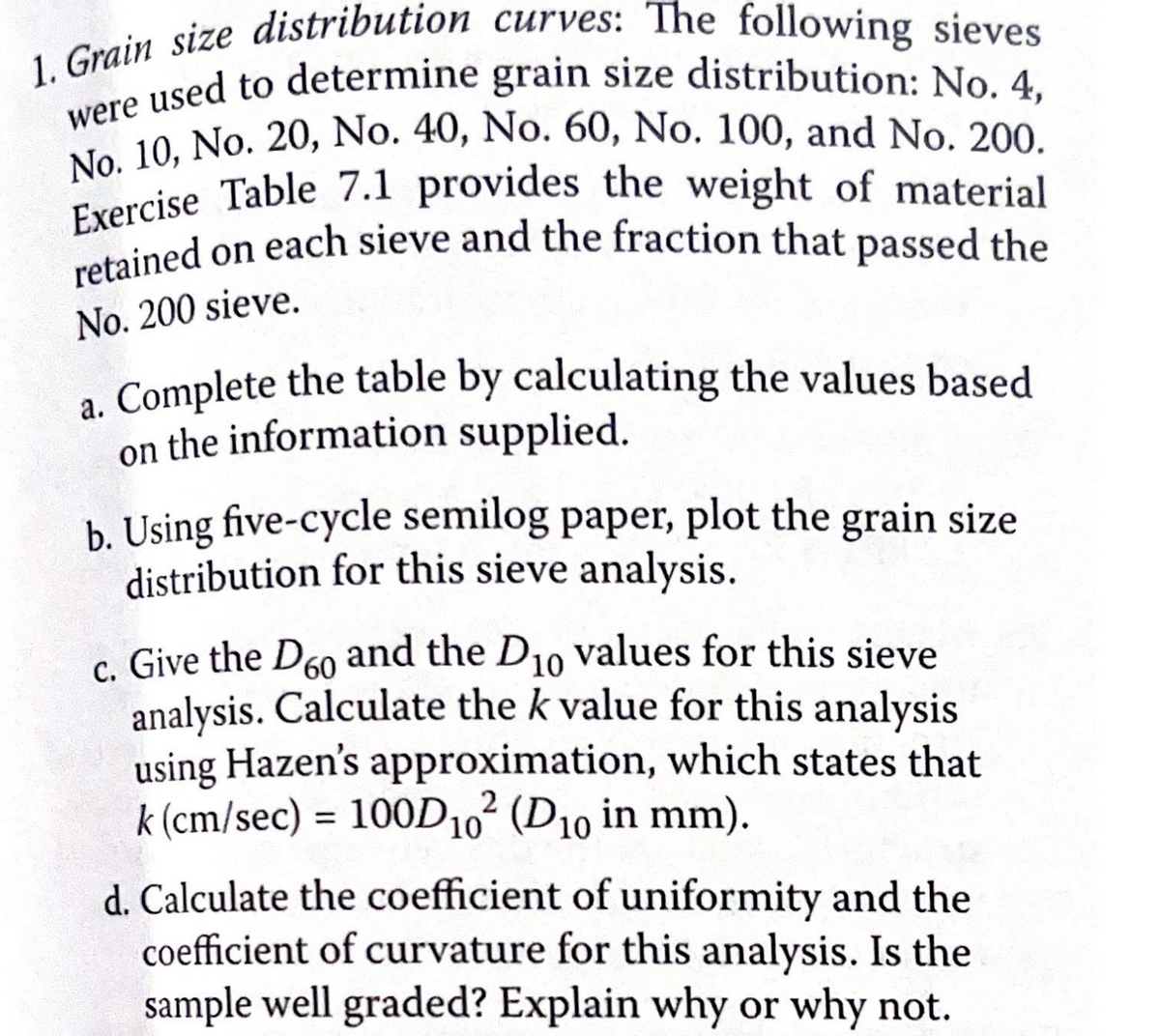. 10, No. 20, No. 40, No. 60, No. 100, and N- ercise Table 7.1 provides the weight of m d on each sieve and the fraction that pass ere
. 10, No. 20, No. 40, No. 60, No. 100, and N- ercise Table 7.1 provides the weight of m d on each sieve and the fraction that pass ere
Chapter2: Loads On Structures
Section: Chapter Questions
Problem 1P
Related questions
Question
how do you actually calculate D10 and D60 in c? is there a way to do it without plotiting the points in a calculator?

Transcribed Image Text:1. Grain size distribution curves: The following sieves
were used to determine grain size distribution: No. 4,
No. 10, No. 20, No. 40, No. 60, No. 100, and No. 200.
Exercise Table 7.1 provides the weight of material
retained on each sieve and the fraction that passed the
No. 200 sieve.
a. Complete the table by calculating the values based
on the information supplied.
b. Using five-cycle semilog paper, plot the grain size
distribution for this sieve analysis.
c. Give the D60 and the D10 values for this sieve
analysis. Calculate the k value for this analysis
using Hazen's approximation, which states that
k (cm/sec) = 100D10² (D10 in mm).
d. Calculate the coefficient of uniformity and the
coefficient of curvature for this analysis. Is the
sample well graded? Explain why or why not.
Expert Solution
This question has been solved!
Explore an expertly crafted, step-by-step solution for a thorough understanding of key concepts.
This is a popular solution!
Trending now
This is a popular solution!
Step by step
Solved in 3 steps with 1 images

Knowledge Booster
Learn more about
Need a deep-dive on the concept behind this application? Look no further. Learn more about this topic, civil-engineering and related others by exploring similar questions and additional content below.Recommended textbooks for you


Structural Analysis (10th Edition)
Civil Engineering
ISBN:
9780134610672
Author:
Russell C. Hibbeler
Publisher:
PEARSON

Principles of Foundation Engineering (MindTap Cou…
Civil Engineering
ISBN:
9781337705028
Author:
Braja M. Das, Nagaratnam Sivakugan
Publisher:
Cengage Learning


Structural Analysis (10th Edition)
Civil Engineering
ISBN:
9780134610672
Author:
Russell C. Hibbeler
Publisher:
PEARSON

Principles of Foundation Engineering (MindTap Cou…
Civil Engineering
ISBN:
9781337705028
Author:
Braja M. Das, Nagaratnam Sivakugan
Publisher:
Cengage Learning

Fundamentals of Structural Analysis
Civil Engineering
ISBN:
9780073398006
Author:
Kenneth M. Leet Emeritus, Chia-Ming Uang, Joel Lanning
Publisher:
McGraw-Hill Education


Traffic and Highway Engineering
Civil Engineering
ISBN:
9781305156241
Author:
Garber, Nicholas J.
Publisher:
Cengage Learning